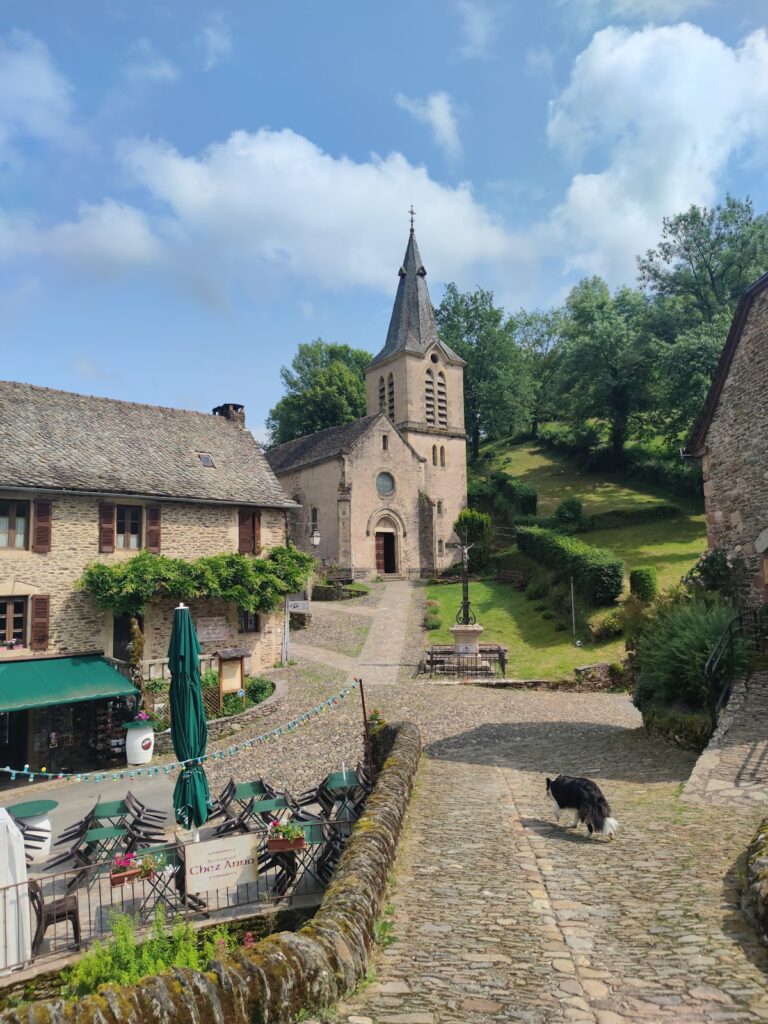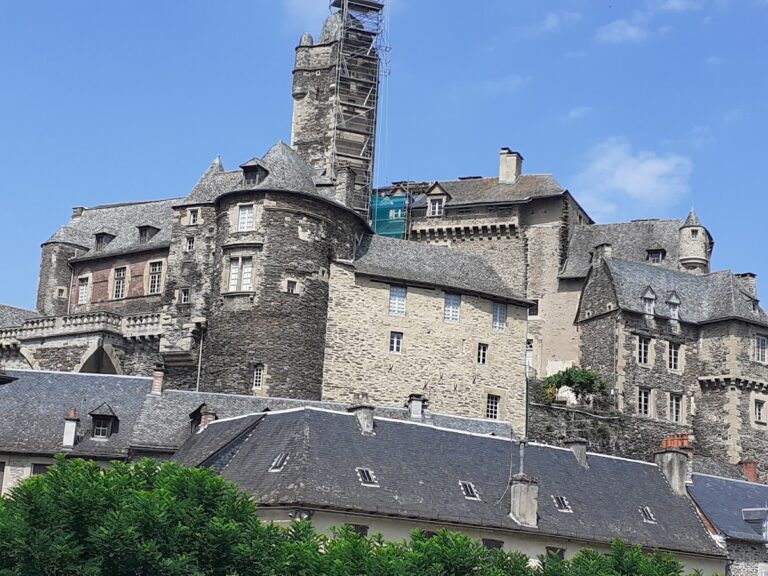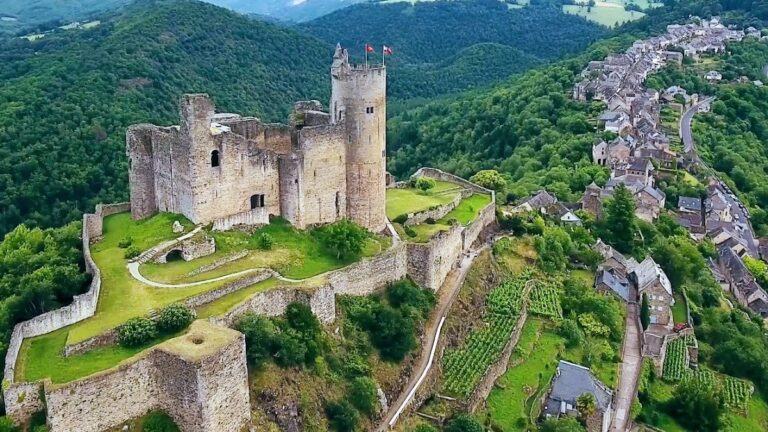Château de Belcastel: A Medieval Fortress in France
Visitor Information
Google Rating: 4.6
Popularity: Medium
Google Maps: View on Google Maps
Country: France
Civilization: Unclassified
Remains: Military
History
The Château de Belcastel stands in the village of Belcastel in modern-day France, built by medieval European societies. The site’s origins may go back to Roman times, when a strongpoint was established on a rocky outcrop overlooking the Aveyron River. This location was chosen to safeguard the valley and control passage through the region.
Construction activity definitively began in the 8th century with the establishment of a small chapel dedicated to Saint Mary Magdalene. This early religious structure preceded the castle’s development. Over the 9th and 10th centuries, a fortress was erected and fortified to provide defense and administrative control in the valley. Oldoric I of Panat (940–987) played a key role in founding or expanding the castle during this period. Gérard I Frotard became the first lord to adopt the name “de Belcastel,” marking the emergence of the local noble lineage associated with the site.
Through the 11th and 14th centuries, the castle underwent additional fortifications and architectural modifications. Ownership passed among several influential regional families, including the Armagnac and Saunhac houses. The Saunhac family, in particular, revitalized both the village and the castle after the tumult of the Hundred Years’ War. They completed important castle transformations and constructed the village bridge and the church of Sainte-Marie-Madeleine, which remain standing to this day.
In 1368, the castle came under English control following its sale to the English crown during the Hundred Years’ War. It later returned to French royal hands under King Charles V before being granted to the Armagnac family and then to the Saunhacs. Subsequent generations inherited the castle through marriage, but over time the fortress fell into neglect.
By the early 17th century, Château de Belcastel was abandoned and had deteriorated into ruins. Its condition worsened in the 19th century when it was used as a quarry for stone, contributing to the collapse of parts of its structure such as the west façade in the early 20th century. Recognizing its historical value, the French Ministry of Culture designated the ruins as a protected historic monument in 1928.
The castle’s fortunes changed in 1972 when architect Fernand Pouillon acquired the dilapidated fortress. Over an eight-year period, he led a painstaking restoration project using traditional medieval construction techniques, avoiding modern machinery. He also incorporated 87 stained-glass windows from the 16th century, originally from Orléans Cathedral, restoring the castle to a livable state, which he used as a private home until his death in 1986.
After Pouillon’s passing, his family retained ownership until 2005 when the castle was sold to gallery owners Heidi Leigh and Nick Leone from New York. They opened the site to the public as a historic monument and art gallery, integrating contemporary art exhibitions and partially converting parts of the castle into a hotel. In 2017, the association “Héritage Fernand Pouillon” was established to support projects that upheld Pouillon’s legacy by combining art and architecture.
In 2025, Éric and Valérie Girard acquired Château de Belcastel and continue to maintain it, allowing public access alongside hotel activities. The castle forms part of the Route des Seigneurs du Rouergue, a network of 23 castles in the Aveyron area strikingly illustrating regional medieval heritage. The village of Belcastel itself gained recognition as one of “Les Plus Beaux Villages de France” in 1992, linked closely to the castle’s restoration and presence.
Remains
Château de Belcastel occupies a steep rocky promontory approximately 40 meters above the north bank of the Aveyron River, featuring stone walls and towers typical of medieval fortresses. Its layout reflects successive building phases from the 8th through the 14th centuries, evolving from an initial chapel into a fully fortified castle complex. The stronghold lacked carriage road access, requiring all building materials, including stones quarried from a nearby hilltop, to be transported by hand during the recent restorations.
An early feature is the chapel dedicated to Saint Mary Magdalene, reflecting the castle’s original religious function. This chapel once stood alongside the castle’s defensive walls and was integrated into later fortifications, with overlapping chapels illustrating changing architectural needs over time. The village below includes the church of Sainte-Marie-Madeleine and a stone bridge constructed by the Saunhac family in the post-Hundred Years’ War era, showing a spatial and historical connection to the castle.
The medieval fortress includes large stone ramparts, several towers reconstructed during restoration, arched doorways, and fireplaces designed for defense and residence. Distinctive sixteenth-century stained-glass windows, numbering 87 in total, were carefully restored and installed by Fernand Pouillon; these were sourced from Orléans Cathedral and add a refined decorative aspect to the fortress interiors.
During the extensive restoration led by Pouillon between 1972 and 1980, the castle’s walls, towers, roofs, and structural elements such as massive wooden beams and stone arches were reconstructed using medieval techniques without cranes or modern machines. The team of stonemasons and stained-glass artisans worked with locally quarried stone to recreate historically accurate details. Prior to restoration, the site was ruinous with collapsed façades and dense vegetation, but it now stands as a complete structure with its medieval character fully revived.
Modern adaptations include additions for hospitality purposes, such as the partial conversion of inner spaces into hotel accommodations and the creation of a swimming pool set within the castle’s former moat (douves). Despite such updates, the castle preserves its historic architecture while accommodating contemporary cultural uses, including serving as a gallery for medieval artifacts and modern artworks. The combination of original medieval fabric and careful restoration highlights the castle’s long history and evolving role through the centuries.










